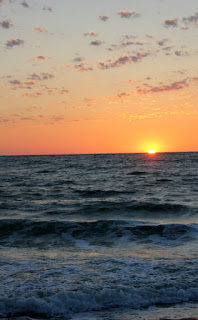What really makes us happy and healthy?
According to the longest study of human development that’s ever been done, it’s
not money, not fame, and not a high-powered career. According to Robert
Waldinger, the (fourth!) director of the 75-year-old Harvard Study of Adult
Development, “Good relationships keep us happier and healthier, period.” (Click
here to see Waldinger’s TED talk on the subject.)
That’s good news—because building close connections is
something we can all do, no matter where we live, no matter how much money we
have, or what kind of work we do. Waldinger noted that people didn’t have to be in a
committed relationship, or have a huge number of friends to see the benefits.
What mattered was the quality of the relationships. With that in mind,
here are three simple ways we can improve our oh-so-important-for-happiness relationships:
Touch base more often. If you’re like me, you often
take your friends and family for granted, missing out on opportunities to build
closeness. One of my goals in 2016 has been to keep in better touch with those
I love, using whatever method they find easy to use. Many of my loved
ones live far away from me, so I’ve been texting, calling, sending messages on
Facebook, even—gasp!—writing snail mail letters more often. If they do live near me, I’m making more of
an effort to spend time together. I feel more connected to my family and
friends, and that makes me happier.
Show appreciation. Research shows that feeling
appreciated is one major contributor to lasting loving relationships. Think
about all the ways your loved one contributes to your life—does your spouse
earn a good living? Is your mom a great listener? Does your son or daughter
make you laugh? What about that friend
who never forgets your birthday? Let him or her know you’ve noticed and say
thank you. We just hosted a big weekend family gathering and not only did
everyone thank us, they brought us a card and gift! It feels good to be
appreciated—and we’re also much more likely to want to host future family
events because we know our family appreciates it when we do.
Love the one you’re with. Have you noticed that your
partner (or child, parent, or friend) isn’t perfect, or doesn’t always behave
just as you’d like them to? Yup, so have I. Instead of wasting time fretting
about this, really see them, appreciate them for who they are, and don’t try to
change them. Love them anyway. The following quote has helped me
enormously (unfortunately, I can’t remember who said it): “Love them with your
heart, not your ego.”
I feel lucky to have many close and loving relationships
with family and friends, and knowing how important those connections are to my
happiness and health only makes me want to work harder on staying close. It’s a
simple pleasure within reach of us all.
How do you stay connected with the people you love?






















































.jpg)


